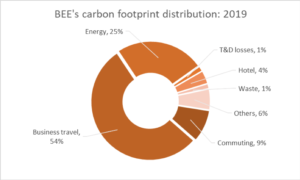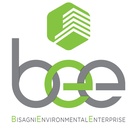BEE TRACKS ITS FIRST CORPORATE CARBON FOOTPRINT
 Mandarivaa
Mandarivaa
ver the past ten years since its establishment, BEE Incorporations has preached ‘conscious engineering’ through our sustainability consultancy work with our clients and partners. At BEE, we have decided to launch our first sustainability initiative to track our corporate carbon footprint, and intend to use this calculation as a baseline to assess how we perform in the next few years, and then take measures to improve our performance.
As a first step, we measured the carbon footprint of our activities in Greater China using the GHG Protocol Corporate Standard. The carbon footprint is the calculation of all greenhouse gas (GHG) emissions emitted by an individual, organization, event or product directly or indirectly. Through carbon footprint calculations, the impact derived from certain activities on the environment can be quantified, which facilitates the identification, scope and subsequent work of reducing both emissions and direct and indirect costs related to such activities.
The first assessment covers BEE’s 2019 operations in Mainland China, Taiwan, and Hong Kong and includes both direct (scope 1) and indirect carbon emissions (scopes 2 and 3)[1]. Our Scope 1 emissions was zero, as our business nature and office facility maintenance activities do not include direct emissions, such as fuel combustion on site. As for indirect carbon emissions, BEE’s performance was estimated to be 4.3 tCO2-eq/employee. Overall, business travel (54%) and energy use (25%) were the top two contributors to the company’s carbon footprint.
The main sources of carbon emissions in 2019.
Moving Forward
Our 2019 results will serve as a baseline and we will use them to track our efforts in reducing our carbon footprint.
By being an example to the industry, we want to encourage everyone to address climate change and reduce their carbon footprint. As a leader in the green building industry, we are committed to helping other organizations on their journey to reduce their carbon footprints following our company’s mission which is to make a social, environmental, and economic impact.
Full report available here: BEE 2019 Carbon Assessment
[1] Scope 1 emissions are direct GHG emissions that occur from sources that are owned or controlled by the reporting organization. Scope 2 emissions are GHG emissions from electricity and energy purchased by the reporting organization. Scope 3 emissions are associated to GHG emissions that are a consequence of the reporting organization’s activities but that occur at sources not owned or controlled by the organization (e.g. plane travel).

